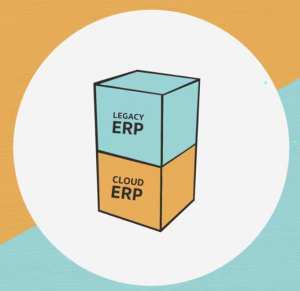2023 ERP Trends to Look Out For
Joseph Slevin
Staff Writer
Business and tech are becoming more inseparable every year. Businesses rely on innovations in information systems to scale their product or services to the most productive level whether it is finance, accounting, supply chain, procurement, CRM or human resources, more companies are looking for software to bridge all these departments. That sentiment for an integrated information system is what has drove the ERP market for 50 years.
Enterprise Resource Planning, or ERP, refers to business software systems that help organize the business and all of its basic functions. A simple example of an ERP system is iCloud or Google DriveBoth are cloud-based systems that allow multiple users across departments to access the same common data stored on them. These systems document personal information about employees, sales data, customer information, and buying patterns. Anything an organization might find useful when running their business.
With any technology, there are going to be improvements. The ERP market, which drove almost $50 billion in revenue last year and has a CAGR of 5.6% over the next 5 years, is no exception. This article will track some trends in the ERP market that all business owners must keep an eye on to keep their company competitive.
The first of these innovations is a new focus on a Mobile-First approach to business systems. More employees are on the go and with that movement comes the need for ERP systems to be available on their phones or tablet. Popular systems like NetSuite, Monday.com, and QuickBooks all have apps that allow users to plan team meetings, monitor important resources, and access critical task/information on the go.

Another popular trend for ERPs is the idea of a two-tier” ERP systems. If you’re unfamiliar with this phrase, a two tier ERP system is when an enterprise combines multiple tier systems across their different entities. For example, a large, multi-national company might use a tier 1 ERP for their corporate office, since tier 1s are most apt for large global enterprises. These types of systems are highly complex and can handle large swaths of data. Companies need multiple users to handle one task efficiently. But the company could then use a Tier 2 or 3 ERP system for their more local locations to handle day-to-day operations. Tier 2 or 3 systems would be something like Sage, Odoo or QuickBooks. These are “Out of the Box” software that can be customized to fit specific core business needs like HR, supply chain management, sales, finance, essential to the practical retail or distribution side of the business The real test of two-tier systems will be how they work together as a “Hybrid” system. Where the two systems need to transact with one another and the emerging integration technology that will come out of that will be an important part of the development and use of ERPs in the future.
In today’s complex business arena, it is becoming increasingly rare to have an ERP system that is a “one-size-fits-all”, customers in all different fields are demanding customization within their systems. It could be add-ons to an existing system that we’ve mentioned before or a complete ground-up build of a new system, something that is an emerging industry for IT and business professionals.
A different option than the expensive service of customization is seeking out systems that are tailor-made for current industries. Manufacturing, distribution, and construction are all fields that have specific needs that are now being met by specifically tailored software with a focus on user experience simplifying everything.
Finally, Artificial Intelligence and Machine Learning. As with everything it seems like AI will be coming to ERP systems as soon as this year. AI can provide managers with real-time insights that could improve their business, automate manual processes and reporting, and collect data to present to investors within seconds. Machine learning can identify mistakes in manufacturing and using things like sensor technology to better track and improve efficiency in producing products. Naturally, accountants or warehouse managers might feel threatened by AI. But the information provided will just make the decision process easier when their departments are seeking improvements in their functions.
Enterprise Resource Planning software will become essential to all businesses large or small. ERP vendors creating and customizing this technology will be critical to the process. These cloud-based systems will move an organization forward into the future, embracing mobile communication and multi-level services that will be able to interact with any system or business. Any business that can’t see that or refuses to change with the times will see competitors doing a lot more business with much more ease.
Contact Joseph at joseph.slevin@student.shu.edu

